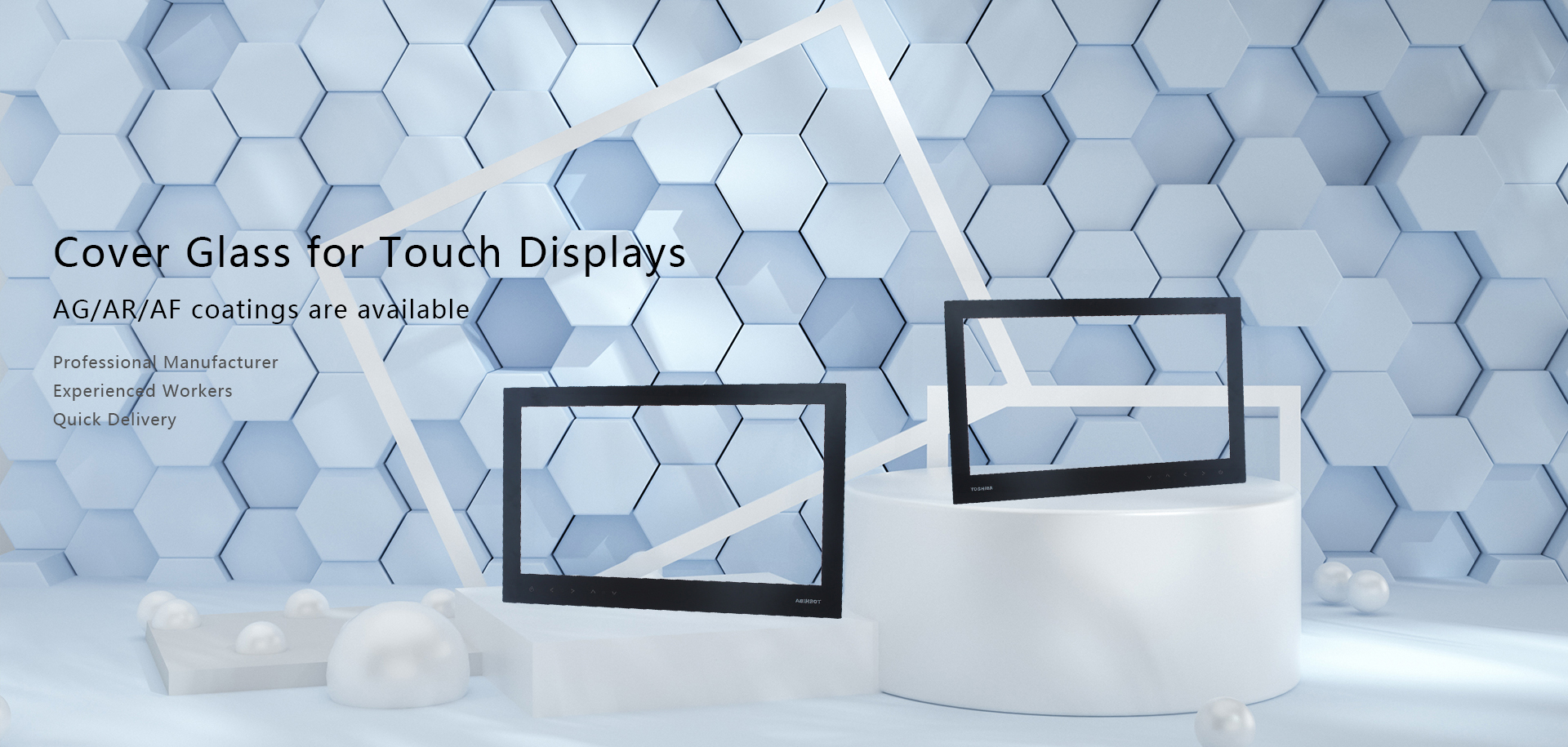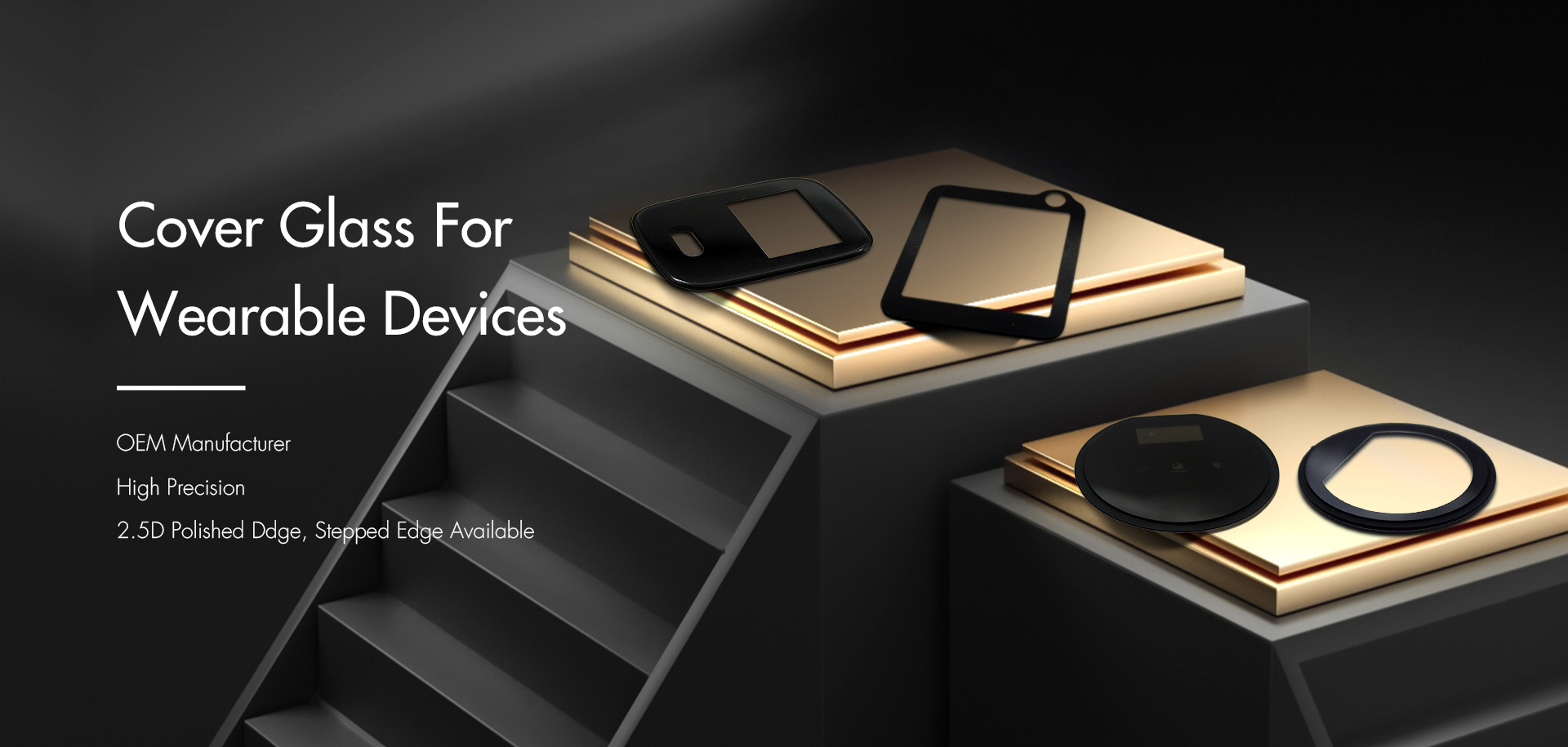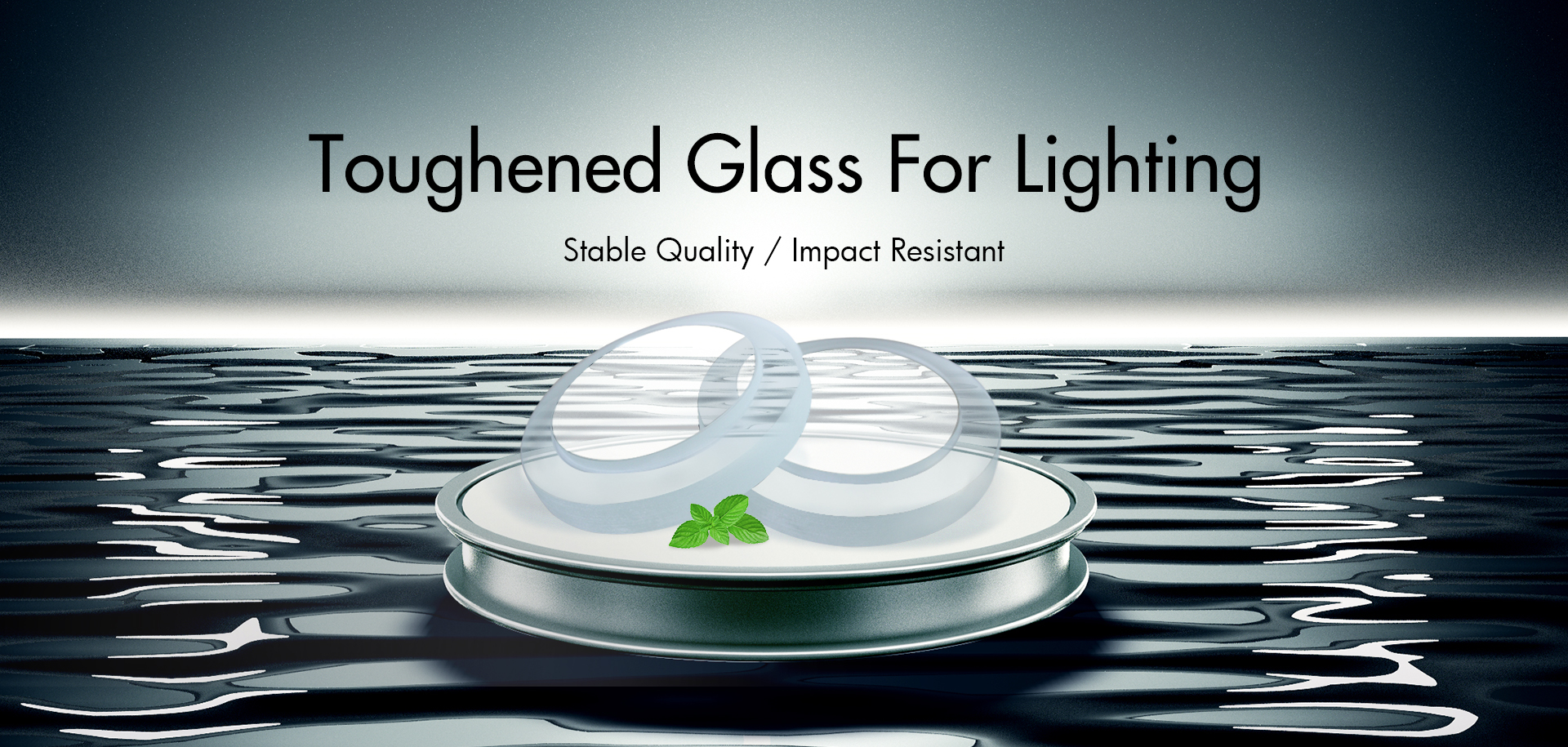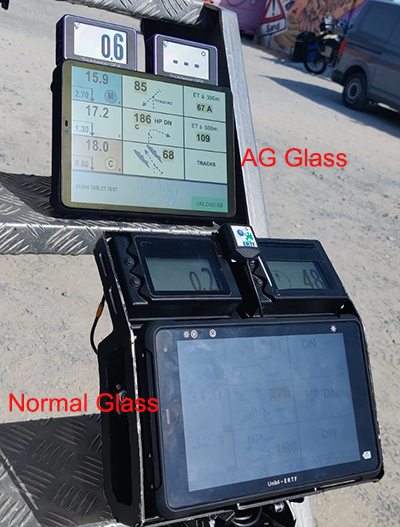AG-glass (Anti-Glare glass)
Anti-glare glass which also called non-glare glass, low reflection glass: By chemical etching or spraying, the reflective surface of the original glass is changed to a diffused surface, which changes the roughness of the glass surface, thereby producing a matte effect on the surface. When the outside light is reflected , it will form a diffuse reflection, which will reduce the reflection of light, and achieve the purpose of not glare, so that the viewer can experience better sensory vision.
Applications: Outdoor display or display applications under strong light. Such as advertising screens, ATM cash machines, POS cash registers, medical B-displays, e-book readers, subway ticket machines, and so on.
If the glass is used at indoor and at the same time have budget requirement, suggest selecting spraying anti-glare coating; If the glass used at outdoor, suggest chemical etching anti-glare, the AG effect can be last as long as the glass itself.
Identification method: Place a piece of glass under the fluorescent light and observe the front of the glass. If the light source of the lamp is dispersed, it is the AG treatment surface, and if the light source of the lamp is clearly visible, it is a non-AG surface.
AR-glass (Anti-Reflective glass)
Anti-reflective glass or we called high transmittance glass: After the glass is optically coated, it reduces its reflectivity and increases the transmittance. The maximum value can increase its transmittance to over 99% and its reflectivity to less than 1%. By increasing the transmittance of the glass, the content of the display is more clearly presented, allowing the viewer to enjoy a more comfortable and clear sensory vision.
Application areas: glass greenhouse, high-definition displays, photo frames, mobile phones and cameras of various instruments, front and rear windshields, solar photovoltaic industry, etc.
Identification method: Take a piece of ordinary glass and an AR glass, and tie it to the computer or other paper screen at the same time. AR coated glass is more clear.
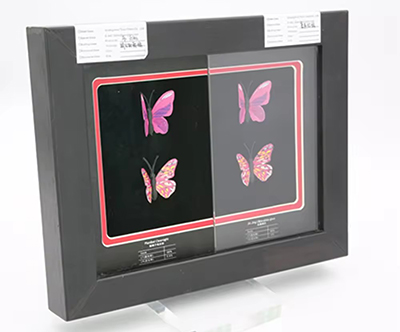
AF -glass (Anti-Fingerprint glass)
Anti-fingerprint glass or anti-smudge glass: AF coating is based on the principle of lotus leaf, coated with a layer of Nano-chemical materials on the surface of the glass to make it have strong hydrophobicity, anti-oil and anti-fingerprint functions. It is easy to wipe off dirt, fingerprints, oil stains, etc. The surface is smoother and feels more comfortable.
Application area: Suitable for display glass cover on all touch screens. The AF coating is single-sided and is used on the front side of the glass.
Identification method: drop a drop of water, the AF surface can be freely scrolled; draw the line with oily strokes, the AF surface can not be drawn.
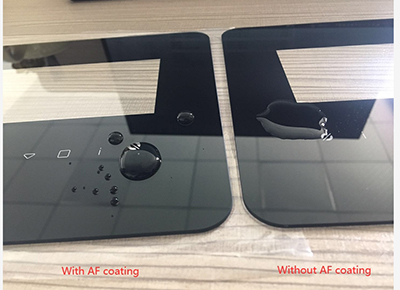
RFQ
1. What is the difference between AG, AR, and AF glass?
Different application will suit different surface treatment glass, please consult our sales to recommend the best solution.
2. How durable are these coatings?
Etched Anti-glare glass can last forever as long as the glass itself, while for spray anti-glare glass and anti-reflective glass and anti-fingerprint glass, the usuage period are depends on using enviorment.
3. Do these coatings affect optical clarity?
Anti-glare coating and anti-fingerprint coating won’t affect the optical clarity but the glass surface will become matte, so that, it can reduced the light reflection.
Anti-reflection coating will increase the optical clarity make the view area more vivid.
4. How to clean and maintain coated glass?
Use 70% alcohol to gentle clear the glass surface.
5. Can coatings be applied to existing glass?
Not okay to applied those coatings on existing glass, which will increase the scratches during processing.
6. Are there certifications or test standards?
Yes, different coating have different test standards.
7. Do they block UV/IR radiation?
Yes, AR coating can block around 40% for UV and around 35% for IR radiation.
8. Can they be customized for specific industries?
Yes, can be customized per provided drawing.
9. Do these coatings work with curved/tempered glass?
Yes, it can be applied on curved glass.
10. What is the environmental impact?
No, the glass is RoHS-compliant or free of hazardous chemicals.
If you have any demand for anti-glare cover glass, anti-reflective glass and anti-fingerprint coating glass, click here to get quick feedback and one to one considerable services.
Post time: Jul-29-2019


